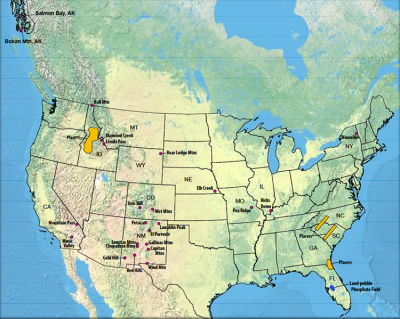Nov
24
A New Fact Check On the Rare Earth Elements
November 24, 2010 | 3 Comments
The U.S. National Defense Authorization Act for 2010 directs the Comptroller General to complete a report on rare earth elements (REE) material. REEs are the fifteen elements with atomic numbers 57 through 71, from lanthanum to lutetium ( the lanthanides), plus yttrium, atomic number 39, which is chemically similar to the lanthanide elements and thus typically included with the rare earth elements. Although industrial demand for these elements is relatively small in tonnage terms compared to major commodities, the elements are essential for a diverse and expanding array of high-technology applications. The report is on the net and worth a hard look.
The short list of product uses includes magnets, metal alloys for batteries and lightweight structures, and phosphors essential for many current and emerging alternative energy technologies. The industrial field short list is electric vehicles, energy-efficient lighting, consumer electronics, wind power a number of key defense systems and other advanced materials uses.
Ninety-six percent of the REEs produced globally now come from China. New REE mines are being developed in Australia, and projects exploring the feasibility of economic development of additional REE deposits are under way in the United States, Australia, and Canada. The report said successful completion of these projects could help meet increasing demand for REEs.
The big news is approximately 13 million metric tons of the REEs exist within known deposits in the United States, according to the U.S. Geological Survey’s (USGS) part of the report, its first-ever nationwide estimate of these elements.
The report describes significant rare earth deposits in 14 states, with the largest known REE deposits at Mountain Pass, California; Bokan Mountain, Alaska; and the Bear Lodge Mountains, Wyoming. The Mountain Pass mine produced REEs until it closed in 2002. Additional states with known REE deposits include Colorado, Florida, Georgia, Idaho, Illinois, Missouri, Nebraska, New Mexico, New York, North Carolina, and South Carolina.
The counter point is many of these deposits have yet to be proven. But at recent U.S. domestic consumption rates of about 10,000 metric tons annually, the U.S. deposits have the potential to meet national needs for years to come.
While called rare, the REEs are relatively common within the earth’s crust, but because of their geochemical properties, they are not often found in economically exploitable concentrations. Take that to mean the concentration level isn’t high or they are bound up in naturally occurring alloys.
Hard-rock deposits yield the most economically exploitable concentrations of REE. USGS researchers also analyzed two other types of REE deposits: placer and phosphorite deposits. Placer deposits are alluvial formations of sandy sediments from the wash of moving water or wind, which often contain concentrations of heavy, dense minerals, some containing REE. Phosphorite deposits, which mostly occur in the southeastern U.S., contain large amounts of phosphate-bearing minerals. These phosphates can yield yttrium and lanthanum, which are also REE.
Currently the United States, and the rest of the industrial producing countries, obtain their REE raw materials from foreign sources, almost exclusively from China. This is not a safe thing as China made clear with its threads against Japan not long ago. Dependence upon a single country for supplies raises serious issues of worldwide economic security. That makes available resources in the U.S.’s traditional trading partners (such as Canada and Australia) of intense interest for diversifying sources of supply.
Of major world interest, the report also covers in some reliable if not as accurate detail the world resources. The REEs are truly a world market and their access is crucial for a significant part of the world economy. This report is critical for investors through to consumers.
That might explain and clarify the Chinese abrupt abandonment of the threat of embargo. With 96% market share, the rush for alternative resources would crash their market. Loosing the REEs would naturally cause more industrial competition, and by no means is everyone in China in the new middle class, by hundreds of millions of people. A loose cannon bureaucrat even in China can have mega billion dollar world impacts.
In the energy and fuel arena it’s the magnets that matter most. While there are great developments and innovation in route and some early improvements available now, the REE based magnets have important attributes.
It may be, whether for economic or military security, useful that countries with resources consider alternative development very quickly and drive more supply with consideration given to assure competitiveness. That may grate on free trader and conservative values – but monopolies with 96% share aren’t thinking free trade or values of any familiar sort. Self-protection is conservation at its finest after all.
Comments
3 Comments so far



[…] This post was mentioned on Twitter by mvikred, Vladimir Vasquez. Vladimir Vasquez said: A New Fact Check On the Rare Earth Elements http://bit.ly/foiqxl Las tierras raras podrían no ser tan raras /cc @feedly […]
Oooh, you’re such an inspiration. I love this blog!
I truly enjoy looking through this internet site, it contains good articles.